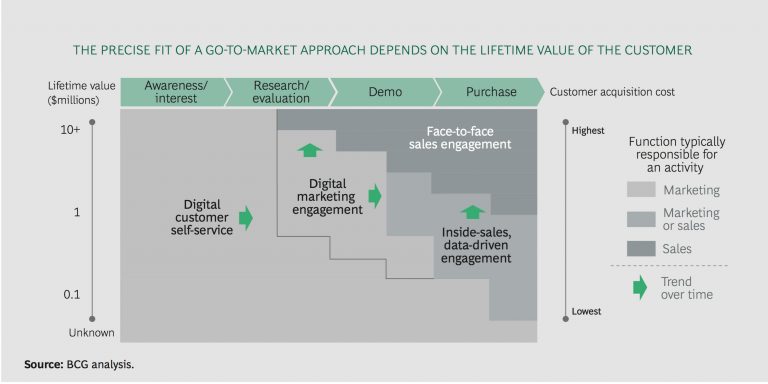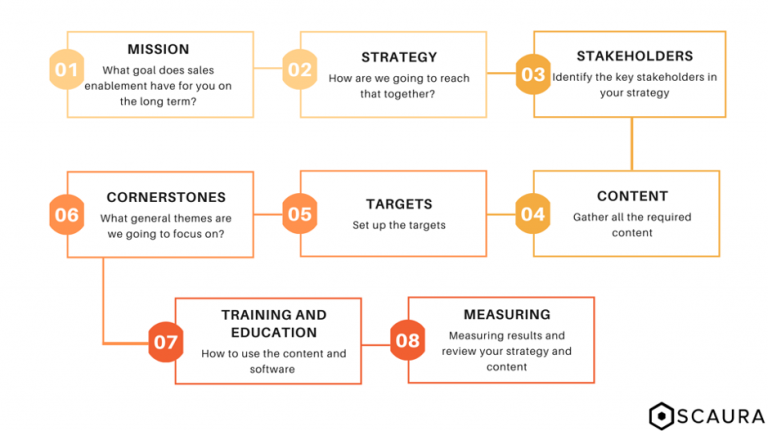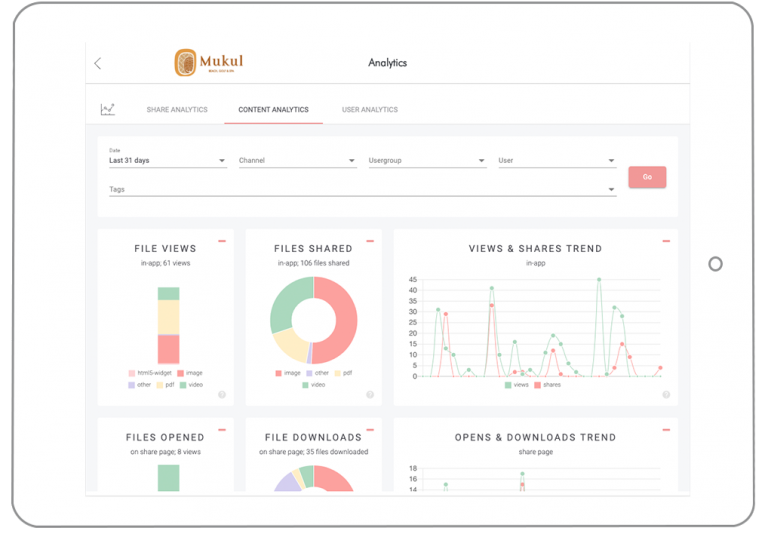
Sales enablement is a term that is being thrown around more and more in today’s business. It is the process in which sales teams are being aided by several other departments to be successful in their respective sales cycles. It allows representatives to have proper knowledge, tools and other resources to get the most out of every opportunity.
Organizations use sales enablement to create, optimize and deliver content and knowledge to their sales team. This, in order to make sure the potential customer is having the best possible experience with the company, enhancing the buyer’s journey and get them on board to do business.
Benefits of having sales enablement integrated in your business
So, you have heard about sales enablement, but what does it actually add to what you already have in place? Here are some of the benefits;
- It enables your representatives to differentiate themselves by getting qualified leads thanks to relevant data. No more hail shooting, but precise targeting.
- The data generated gives your sales team insight into customer behavior, motivation, pain points and desires. This will enable them to tailor their message to the prospect’s needs.
- It should be no surprise, that with the two points mentioned above your representatives will be able to drastically increase the quality of sales meetings.
- But it is not just sales enablement, it also helps to strengthen the relationships with existing customers. Knowing exactly how they operate, what they want and do not want, makes sure your people know how to treat these customers enhancing the relationship.
Seems more than ok, right? Well, as with any component of your business you need to have a plan to ensure that sales enablement is effectively integrated in your business.
Why you need a sales enablement strategy
First of all, you want your sales team to perform even better than they are doing right now. Sales is quite often a bit isolated from other divisions in a company, which means that representatives can be found searching for some form of content they can use. Not very effective when they should be out engaging prospects.
The key sentence here is alignment. A sales enablement plan increases the collaboration between sales, marketing and other divisions within a company. All involved have clear objectives which are worked on as a collective. Of course, the salespeople are still the ones closing the deals but the input from marketing and other divisions is of equal importance.
The right sales enablement strategy will aid your business in making sales enablement an integral part of your sales cycle.
Key points of a sales enablement strategy
There is not one-size-fits-all approach to drafting a sales enablement plan, but there are several key indicators that you need to keep in mind to tailor a strategy to your business’ needs.
Focus on actual enablement
With a sales enablement plan, you aim to equip your salespeople with the resources needed to enhance their performance. Therefore, the focus should be on providing them with the help and resources which will aid their performance.
Type of content needed
A sales enablement plan is not complete without being crystal clear what type of content to use in the different stages of the sales cycle. Audit with both your sales and marketing teams and map out what content is needed. Also be keen on spotting and exploiting any gaps that you think would add value.
Communicating the right value in different stages
All resources used in your sales enablement strategy are ultimately designed to provide customers and prospects with a better experience. Make sure that the right content is provided in all stages of the sales cycle.

Accessibility
A successful sales enablement plan is based on intuitive content that finds representatives at a certain point in the sales cycle. Not the other way around, that would be time wasted for your representatives. Using a sales enablement software application will allow you to align content with sales activities. Making the content accessible from wherever your representatives are working – both online and offline – is even better.
Measuring and optimizing
Executing a sales enablement strategy is one thing, but the steps following the initiation are equally important. After all, you want to know the results of your actions and optimize wherever possible. A successful sales enablement plan will connect your marketing and sales team in a way you have not seen before. Make sure to get feedback from both ends of the spectrum for the best result.
Education and training
Picture this: you have a solid sales enablement plan, software to boot, yet no one in your organization knows how to use both to their maximum potential. That would be tragic, right? It is important to demonstrate the value of both the plan as well as the software, make sure everyone is on board. Should there be alterations to the plan or to the software, hold workshops or trainings to bring everyone up to speed again.
You now have some key points in the back of your mind, but we still have not told you how to craft an actual sales enablement plan. Fear not, because we are moving forward swiftly to…
How to make a sales enablement plan
Alright, so we are going to show you how to craft a sales enablement plan. Let us start off with stating that this is not a blueprint that will work for every industry. What we will bring to the table are the fundamentals where we believe a sales enablement strategy should be build upon.

1. Mission
A sales enablement strategy is not too different to other business strategies. You always start out with stating what sales enablement should do for you on the long term. As it is a mission statement, it rarely changes. Everyone involved, as well as any other person that will come on board later on, can have a look at the mission statement and know what the ultimate goal is.
2. Strategy
A sales enablement strategy should be simple to understand and tell you exactly what the people involved do. Most likely, it will change on annual basis. Important is to chunk the strategy into smaller, better digestible themes. These themes each represent a goal that is critical for your strategy.
3. Stakeholders
Of course, anyone looking at your strategy will want to know which stakeholders are involved. Always take the time to identify the key stakeholders in your strategy. Even though, with a sales enablement plan, it is most likely to be most critical to your sales representatives and your sales manager.
4. Cornerstones
Here you define the broad themes to focus on. It will breathe life into your strategy, as these themes will be easy to understand for anyone involved. You review them once per year and they serve as umbrella for sales enablement activities.
5. Targets
First, you figure out what the most important challenges are that you want to overcome using a sales enablement strategy. Once you have done this, you start laying down your targets. Important to keep in mind:
- Are your targets in line with your business and sales objectives?
- Do your targets have any influence on the company’s revenue?
- Are these targets trackable?
6. Content required
We could not leave this one out, could we? There is no doubt a ton of quality content in your company already. Sad part is, representatives more often than not have no idea where to find it. Let alone how to use it. In this step, you are going to gather all content required, read back in this blog posts for the things to keep in mind when gathering and selecting content.
7. Training and education
It’s a necessity to craft a sales enablement strategy if you are serious enough about it. It is just as necessary however, to make sure that your stakeholders are well trained on how to use the content and the software in which you are organizing it. Most companies conduct trainings for their staff about once a year. Especially with a sales enablement plan, please make sure you do this once per quarter. You want to reinforce and refresh, so your team will remember.
8. Measuring
Having a sales enablement strategy is one thing, keeping it up to date constantly is a different challenge. No market is ever static, so your plan will need to adapt as well, as time goes by. Measuring enables you to figure out what works and what doesn’t. Based on your statistics you are constantly refining your tools, your approach and your product knowledge.

That, in a nutshell, is what we believe are the fundamentals of creating a sales enablement strategy. As we mentioned before, nothing is set in stone as markets and industries today are more diverse than ever.
We’re helping companies in various industries with their sales enablement. Reach out to us or watch our demo to know how we can help you accelerate your sales enablement!
